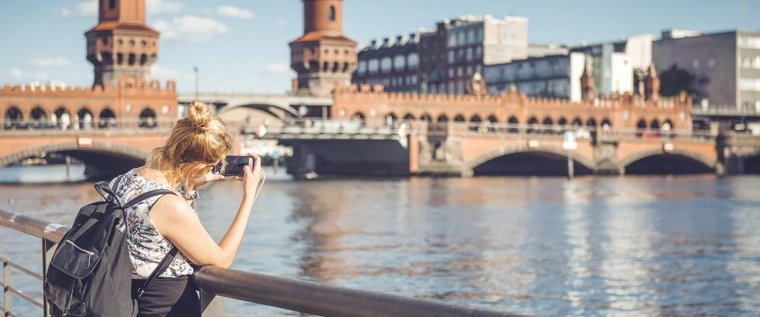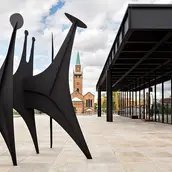
Since the SED regime erected the Berlin Wall in August 1961, there were repeated attempts to cross the deadly barriers underground — either through the city’s sewer system or via self-dug tunnels — in order to reach freedom. The first tunnel project “ran” in October 1961, and the last one failed in 1982. In total, more than 70 escape tunnel projects were actually started, but only 19 of them were successful. There were spectacular successes, acts of betrayal, and bitter failures.
During the tour, we not only tell the stories of these escape tunnels, but also cover the so-called “ghost stations” of Berlin’s subway system and the sealing of the sewer network to prevent underground escapes.
After visiting the Blochplatz civil defense shelter, we take the subway to Bernauer Strasse — a hotspot of Wall construction and a key area for tunnel escapes. Along a stretch of just 350 meters, the border installations were tunneled under seven times. Near these authentic historical sites, we go underground once more. In the historic vaults of the former Oswald Berliner Brewery, we use full-scale tunnel reconstructions to recount both betrayed and failed tunnel attempts as well as the two most successful and spectacular projects from the Berlin Wall era: “Tunnel 29” and “Tunnel 57.” As a highlight, eight meters below the surface, we present an original escape tunnel from 1970/71 — the only real escape tunnel still accessible to visitors today.
At the conclusion of the tour, Burkhart Veigel — one of the most successful escape helpers at the Berlin Wall — will speak about some of his escape assistance operations, particularly the tunnels on Heidelberger Strasse, another “hotspot” of tunnel digging, as well as about the sewer system in Alte Jakobstrasse (Berlin-Kreuzberg) and his ingenious escape missions using forged passports and modified cars.
Burkhart Veigel was born on March 24, 1938, in Thuringia, grew up in Swabia, and became a Berliner by choice in 1961 — first as a medical student at the Free University of Berlin, and later, from 1961 to 1970, as an escape helper. During that time, he managed to bring around 650 people to freedom. Afterward, he ran an orthopedic and trauma surgery practice in Stuttgart for 30 years. Since 2007, he has lived again in Berlin, conducting research on topics such as escape and escape assistance, the Stasi and its crimes, the GDR, the Cold War, and divided Germany.
#berlinfreedomweekja
Additional information
Dates
November 2025
| Mo | Tu | We | Th | Fr | Sa | Su |
|---|---|---|---|---|---|---|
1
|
2
| |||||
3
|
4
|
5
|
6
|
7
|
8
|
9
|
10
|
11
|
12
|
13
|
14
|
15
|
16
|
17
|
18
|
19
|
20
|
21
|
22
|
23
|
24
|
25
|
26
|
27
|
28
|
29
|
30
|


